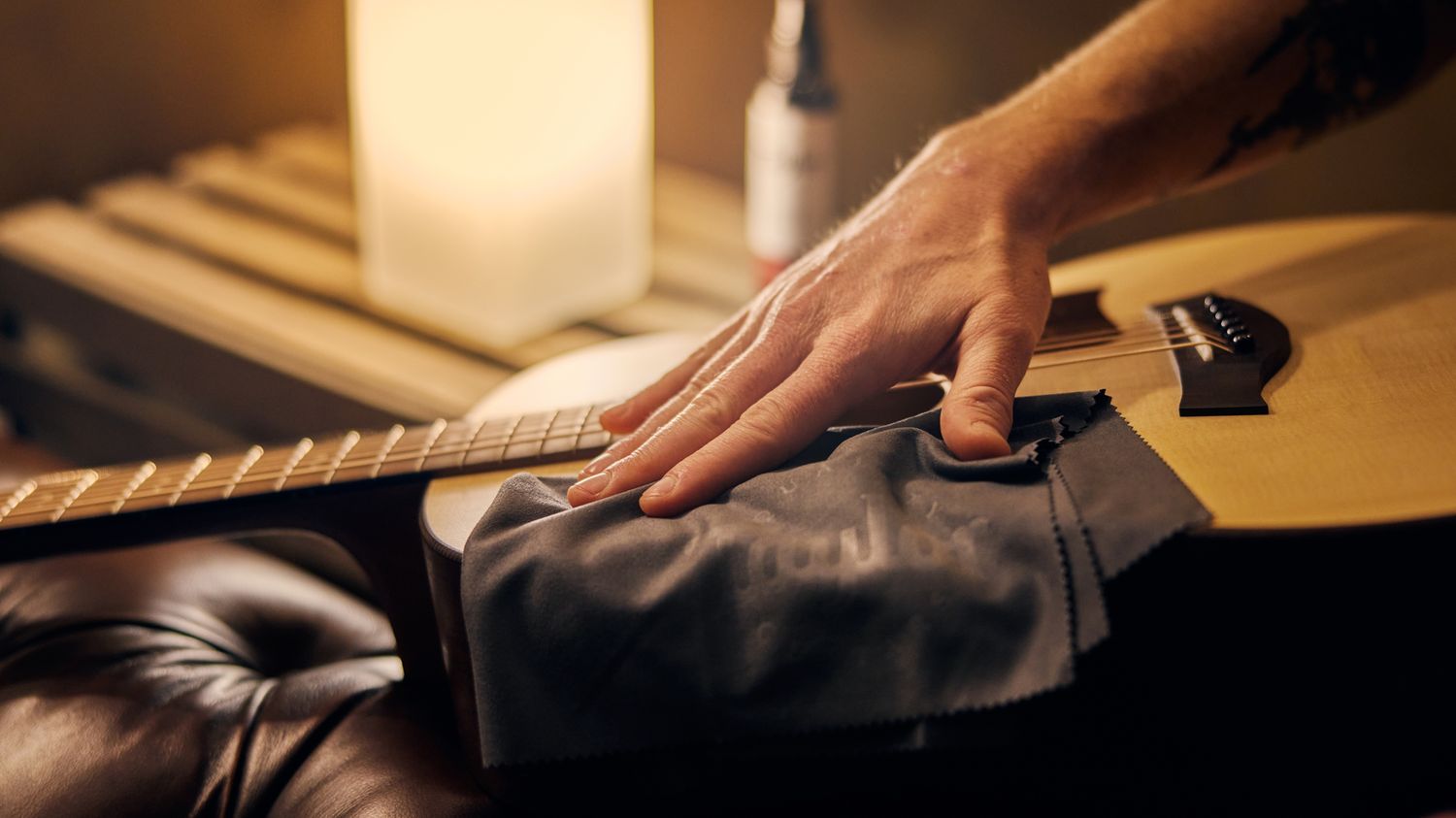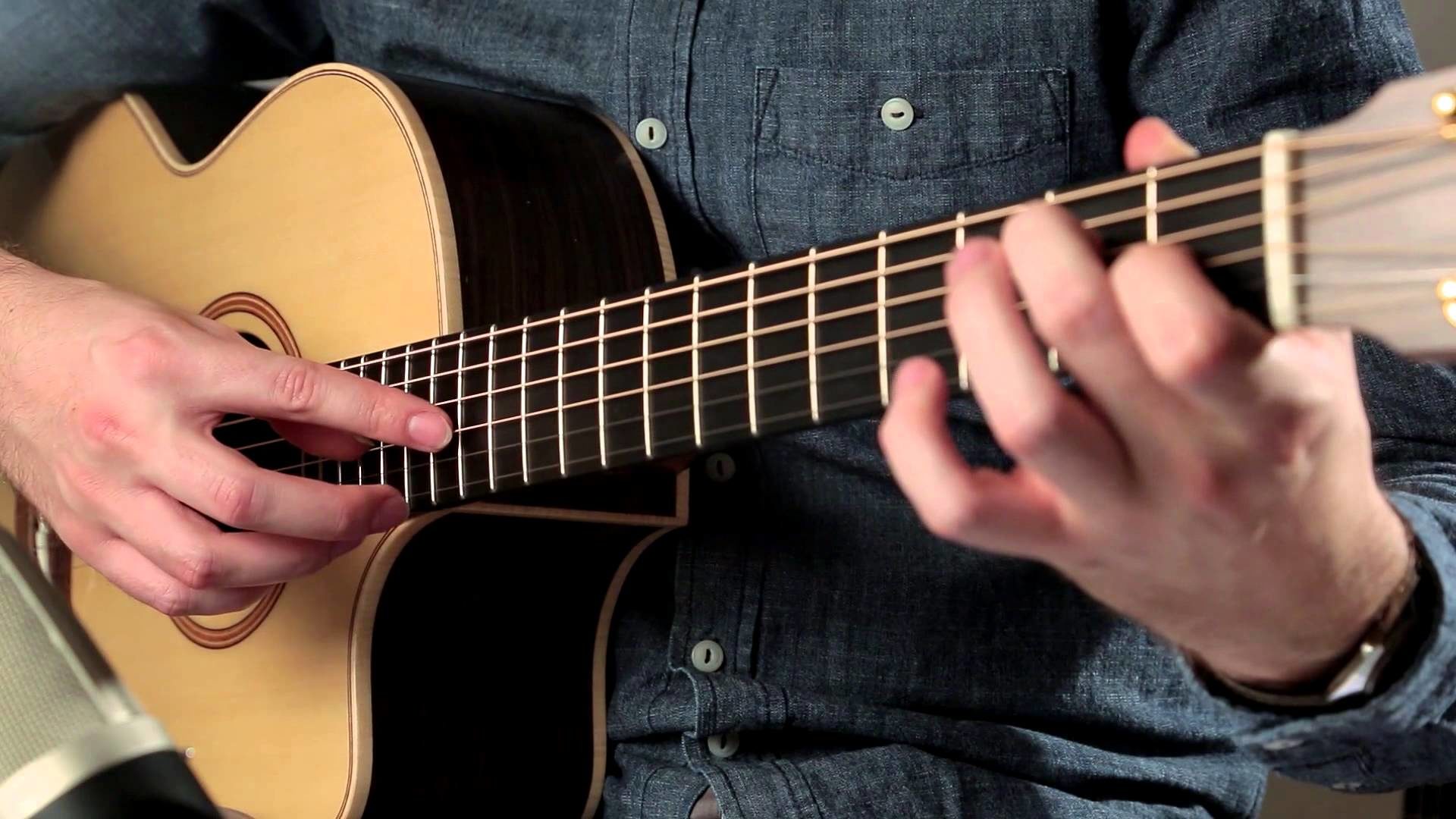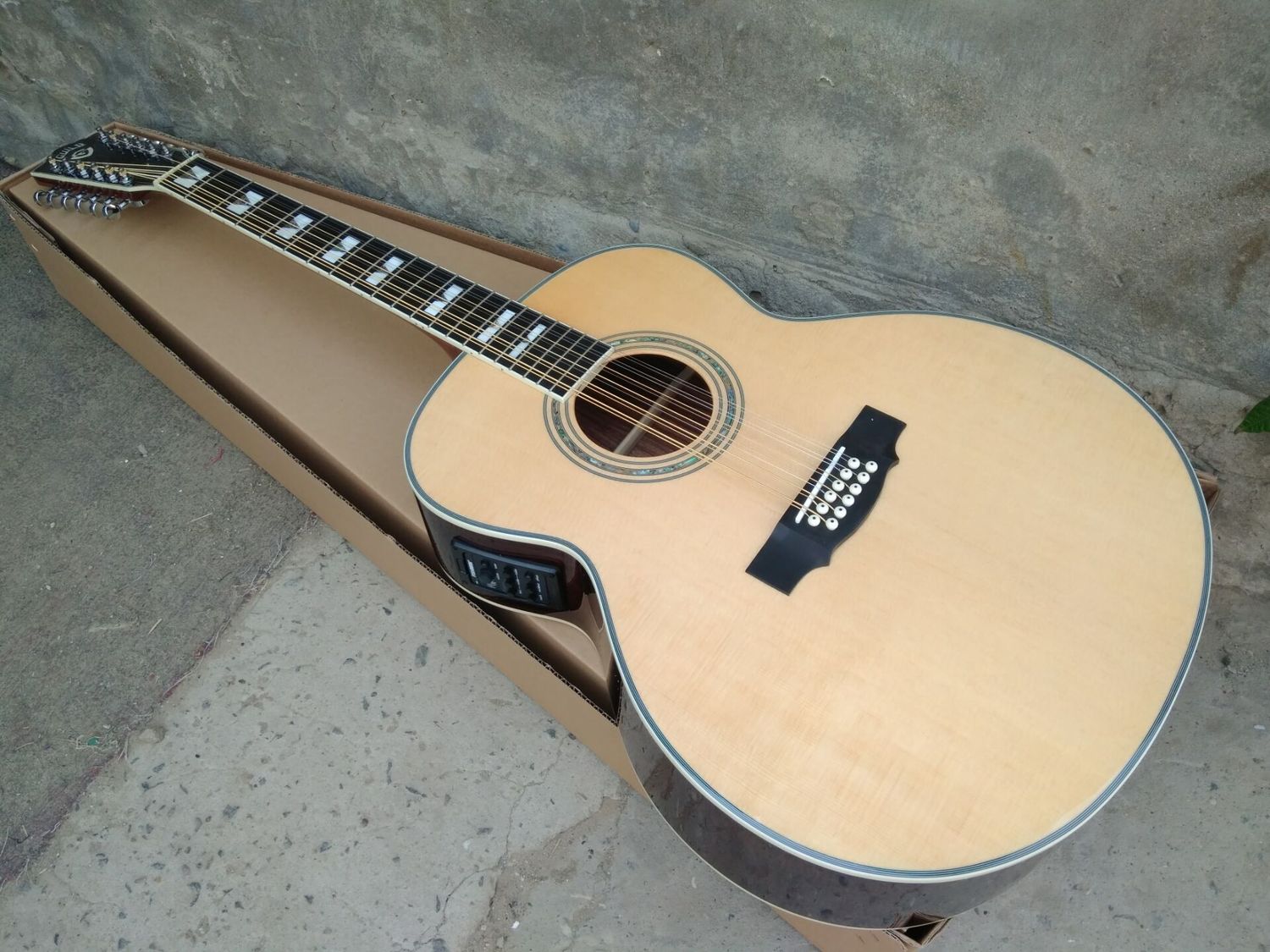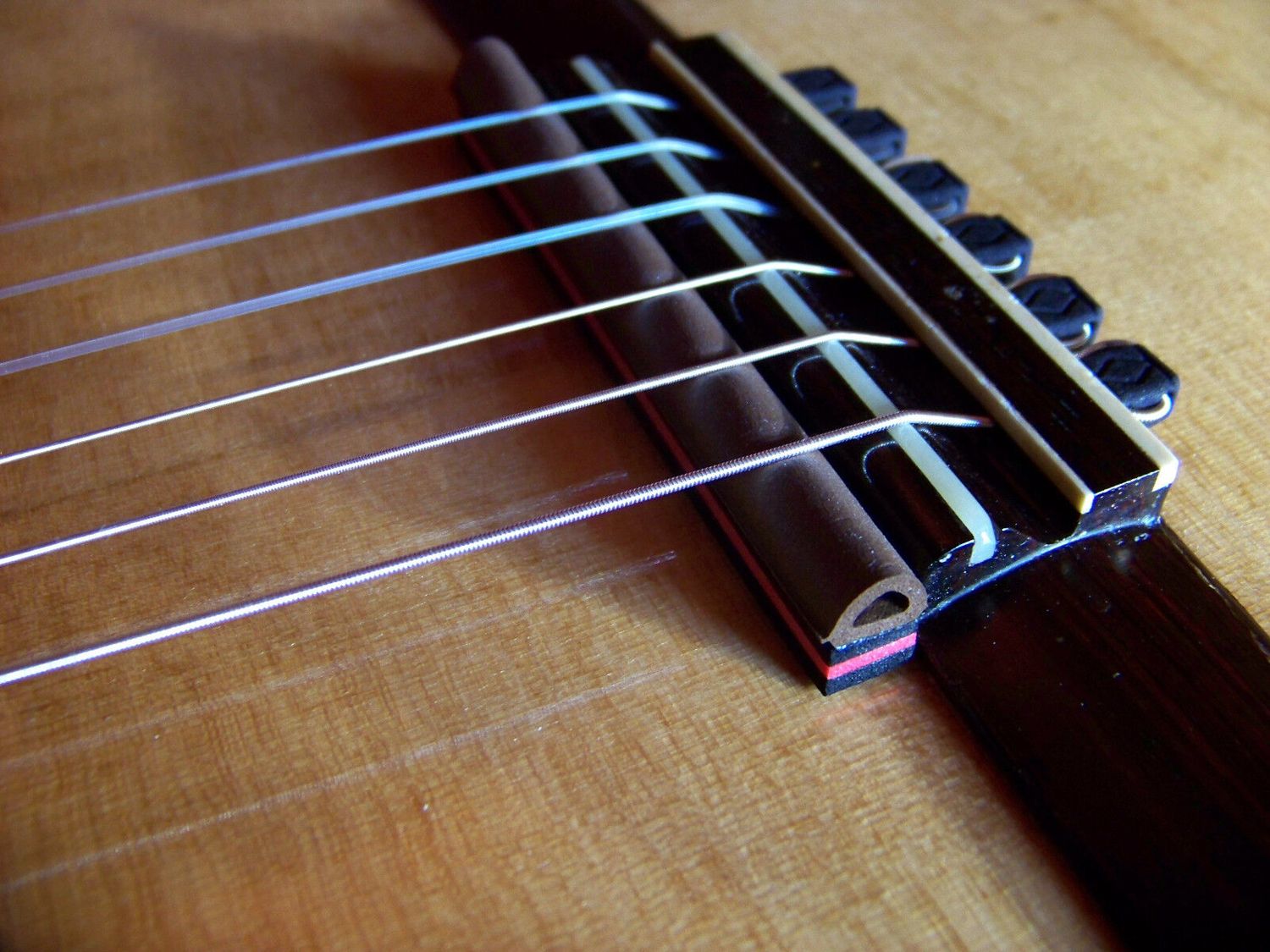Home>Production & Technology>Acoustic>How To Care For An Acoustic Guitar


Acoustic
How To Care For An Acoustic Guitar
Published: March 11, 2024
Learn how to properly care for your acoustic guitar to keep it in top condition. Discover essential maintenance tips and techniques for acoustic guitars.
(Many of the links in this article redirect to a specific reviewed product. Your purchase of these products through affiliate links helps to generate commission for AudioLover.com, at no extra cost. Learn more)
Table of Contents
Introduction
Acoustic guitars are not just musical instruments; they are cherished companions that resonate with the soulful melodies of our lives. Whether you're a seasoned musician or a budding enthusiast, caring for your acoustic guitar is essential to maintain its pristine sound and elegant appearance. In this comprehensive guide, we will delve into the art of nurturing your acoustic guitar, covering everything from selecting the right strings to preserving its timeless allure.
A well-maintained acoustic guitar not only produces captivating tones but also becomes an extension of the artist's expression. From the gentle strumming of folk tunes to the fervent chords of rock ballads, the acoustic guitar's versatility knows no bounds. As you embark on this journey of caring for your instrument, envision the countless melodies it will accompany and the memories it will help create.
Every scratch, every scuff, and every note etched into the wood tells a story of the guitar's journey. It becomes a testament to the passion and dedication of the musician who wields it. By understanding the intricacies of guitar care, you can ensure that your instrument remains a faithful companion, resonating with the melodies of your life for years to come.
So, let's embark on this harmonious voyage, where we will explore the nuances of maintaining an acoustic guitar, nurturing its tonal richness, and preserving its timeless elegance. Whether you're a troubadour strumming by the campfire or a virtuoso captivating audiences on stage, the care you invest in your acoustic guitar will reverberate through every chord and echo through every performance.
Choosing the Right Strings
Selecting the appropriate strings for your acoustic guitar is a pivotal aspect of caring for your instrument. The strings not only influence the tone and playability of the guitar but also contribute to its overall sound quality. When choosing strings, several factors come into play, including material, gauge, and coating.
Material
The material of the strings significantly impacts the guitar's tonal characteristics. Phosphor bronze strings are renowned for their warm, well-balanced tones, making them a popular choice for acoustic guitars. On the other hand, 80/20 bronze strings offer a brighter and crisper sound, ideal for genres that demand a more pronounced treble presence. Additionally, silk and steel strings provide a mellow and soft tonal quality, making them suitable for fingerstyle playing and folk music.
Gauge
String gauge refers to the thickness of the strings, which directly affects the playability and sound of the guitar. Lighter gauge strings exert less tension on the guitar's neck and are easier to fret, making them ideal for beginners and players who prefer effortless string bending. Conversely, heavier gauge strings produce a fuller, more resonant sound, making them a preferred choice for experienced players and those seeking enhanced projection and sustain.
Coating
Coated strings are designed to resist corrosion and prolong their lifespan. The protective coating not only shields the strings from moisture and oils but also minimizes the accumulation of dirt and debris, thereby extending their longevity. Coated strings are particularly beneficial for players who perform frequently or reside in humid environments, as they offer enhanced durability and consistent tone over an extended period.
By carefully considering the material, gauge, and coating of the strings, you can tailor your acoustic guitar's sound to suit your musical preferences and playing style. Whether you seek a warm, mellow resonance or a bright, articulate timbre, the right set of strings can elevate your playing experience and enrich the sonic character of your acoustic guitar.
Cleaning and Polishing
Maintaining the pristine appearance of your acoustic guitar is as crucial as preserving its melodious resonance. Regular cleaning and polishing not only enhance the instrument's aesthetic allure but also safeguard its structural integrity. Here's a detailed guide on how to effectively clean and polish your acoustic guitar, ensuring that it remains a timeless symbol of musical craftsmanship.
Cleaning
Begin the cleaning process by gently wiping the guitar with a soft, lint-free cloth to remove surface dust and smudges. Ensure that the cloth is clean and free from any abrasive particles that could potentially scratch the guitar's finish. For stubborn grime or fingerprints, lightly dampen the cloth with water or a specialized guitar cleaning solution, being cautious not to oversaturate the wood.
Next, delicately clean the fretboard using a dedicated fretboard conditioner or lemon oil, applying it sparingly to hydrate the wood and prevent it from drying out. Carefully rub the conditioner along the length of the fretboard, allowing it to penetrate the wood and revitalize its natural luster. This step is particularly vital for rosewood and ebony fretboards, as it helps maintain their resilience and rich coloration.
Polishing
After cleaning the guitar, proceed to polish the body and neck using a high-quality guitar polish or wax. Apply a small amount of polish onto a clean, soft cloth and gently buff the guitar's surface in circular motions, ensuring even coverage and a lustrous sheen. Avoid using household furniture polish or abrasive compounds, as they can compromise the guitar's finish and diminish its visual appeal.
When polishing the guitar, pay special attention to intricate areas such as the bridge, rosette, and headstock, as these details contribute to the instrument's overall elegance. Additionally, consider using a separate cloth for polishing to prevent any residual cleaning solution from affecting the polishing process.
By incorporating regular cleaning and polishing into your guitar care routine, you not only preserve its captivating aesthetics but also demonstrate a profound reverence for the instrument's craftsmanship. This meticulous attention to detail ensures that your acoustic guitar remains a timeless embodiment of musical artistry, captivating both the eyes and ears of all who behold it.
Humidity and Temperature Control
Maintaining optimal humidity and temperature levels is paramount in safeguarding the structural integrity and tonal stability of your acoustic guitar. Wood, being a hygroscopic material, is highly sensitive to fluctuations in environmental conditions, making it susceptible to warping, cracking, and other forms of damage. By understanding the impact of humidity and temperature on your guitar, you can implement proactive measures to mitigate potential risks and ensure its longevity.
Understanding the Impact
Fluctuations in humidity and temperature can exert profound effects on the wood of an acoustic guitar. High humidity levels can cause the wood to swell and absorb moisture, potentially leading to an elevated action, fret buzzing, and a compromised tonal response. Conversely, low humidity can result in the contraction of wood, leading to fret sprout, diminished resonance, and the formation of cracks in extreme cases. Temperature variations, especially rapid shifts, can exacerbate these effects, amplifying the risk of structural damage.
Humidity Control
To regulate humidity levels, consider investing in a hygrometer, a device that measures the relative humidity in the guitar's environment. Ideally, the humidity should be maintained between 45% and 55% to ensure the stability of the instrument. In regions with excessively dry conditions, utilizing a room humidifier or guitar-specific humidification system can help counteract the effects of low humidity. Conversely, in humid climates, employing dehumidifiers or desiccants can mitigate the risks associated with high humidity.
Temperature Control
Storing your acoustic guitar in a consistent temperature environment is equally crucial. Extreme temperatures, whether excessively hot or cold, can compromise the integrity of the wood and the glue joints, leading to structural issues. Avoid exposing the guitar to direct sunlight, as prolonged exposure can induce rapid temperature fluctuations and potentially damage the finish and wood. Additionally, refrain from leaving the instrument in vehicles or other uncontrolled environments where temperature extremes are prevalent.
Protective Measures
When not in use, store your acoustic guitar in a hardshell case equipped with humidity control mechanisms, such as a humidifier or moisture-absorbing packets. These protective measures help create a stable microclimate within the case, shielding the guitar from abrupt environmental changes. Furthermore, consider placing the case in a consistent temperature area, away from drafty spaces and direct sources of heat or cold.
By conscientiously managing humidity and temperature, you safeguard your acoustic guitar from the perils of environmental fluctuations, ensuring that it remains structurally sound and tonally vibrant. This proactive approach to environmental control not only preserves the instrument's integrity but also underscores your commitment to nurturing its timeless resonance and enduring beauty.
Storage and Transportation
Proper storage and transportation are pivotal in safeguarding the structural integrity and pristine condition of your acoustic guitar. Whether you're a traveling musician or an avid performer, ensuring that your instrument is securely stored and carefully transported is essential for its longevity and performance readiness.
Storage
When the acoustic guitar is not in use, it should be stored in a controlled environment to shield it from potential harm. A hardshell case provides an optimal level of protection, shielding the instrument from impacts, temperature fluctuations, and humidity variations. Ensure that the case is designed specifically for acoustic guitars, providing a snug fit to minimize movement during storage.
Additionally, consider the orientation of the guitar within the case, ensuring that it is positioned in a manner that minimizes stress on the neck and prevents potential damage to the headstock. Placing a soft cloth or padding between the guitar and the case can further cushion the instrument and mitigate the risk of scratches or dents.
For prolonged storage, periodically inspect the guitar to ensure that the strings are not exerting excessive tension on the neck, potentially causing warping or structural strain. Loosening the strings slightly can alleviate this tension and preserve the guitar's neck alignment during extended periods of inactivity.
Transportation
When transporting your acoustic guitar, whether for rehearsals, performances, or travel, it is imperative to prioritize its safety and stability. Invest in a high-quality gig bag or flight case that offers robust protection while remaining lightweight and portable. The case should feature ample padding, reinforced corners, and secure latching mechanisms to safeguard the instrument from external impacts and jostling during transit.
Prior to placing the guitar in the case, ensure that the strings are adequately loosened to alleviate tension on the neck and minimize the risk of damage due to abrupt movements or pressure changes. Secure any loose accessories, such as capos, tuners, or picks, within designated compartments or pouches to prevent them from causing damage to the guitar's finish or components.
During transportation, handle the guitar case with care, avoiding sudden impacts, drops, or exposure to extreme temperatures. When traveling by air, consider the option of carrying the guitar as a carry-on item to retain personal oversight and minimize the risks associated with checked baggage handling.
By prioritizing secure storage and conscientious transportation practices, you not only safeguard the physical integrity of your acoustic guitar but also demonstrate a profound commitment to preserving its timeless allure and musical resonance. These proactive measures ensure that your instrument remains primed for performance and poised to accompany you on countless musical journeys, resonating with the melodies of your life.
Regular Maintenance
Regular maintenance is the cornerstone of preserving the optimal performance and longevity of your acoustic guitar. By incorporating routine care and attention, you can ensure that your instrument continues to resonate with captivating tones and remains structurally sound. From string and fretboard maintenance to truss rod adjustments and hardware inspections, regular maintenance encompasses a spectrum of essential tasks that contribute to the overall well-being of your acoustic guitar.
String Maintenance
Frequent string maintenance is vital for sustaining the playability and tonal quality of your acoustic guitar. Regularly cleaning the strings with a soft cloth after each playing session helps remove accumulated oils, sweat, and debris, preventing premature corrosion and preserving their vibrant sound. Additionally, periodic string changes are necessary to maintain consistent intonation and tone, as worn-out strings can diminish the guitar's resonance and playability.
Fretboard Hydration and Cleaning
The fretboard is a focal point of interaction during playing and requires dedicated care to ensure its longevity and playability. Applying a small amount of fretboard conditioner or lemon oil at regular intervals helps hydrate the wood, preventing it from drying out and potentially developing cracks. Furthermore, cleaning the fretboard with a soft cloth and specialized fretboard cleaner removes grime and residue, maintaining its smooth texture and facilitating effortless fretting.
Truss Rod Adjustment
The truss rod plays a pivotal role in regulating the guitar's neck relief, influencing its playability and action. Periodic truss rod adjustments, performed by a qualified technician, help maintain the ideal neck curvature, ensuring optimal string clearance and playability. Monitoring the neck relief and seeking professional adjustments when necessary is essential for preserving the guitar's structural integrity and playability.
Hardware and Electronics Inspection
Regularly inspecting the hardware, including tuning machines, bridge pins, and strap buttons, helps identify any loose components or signs of wear. Tightening loose hardware and addressing any mechanical issues prevents potential damage and ensures the guitar's stability during performances and practice sessions. Similarly, inspecting the electronics, such as the pickup system and controls, helps maintain consistent tone and functionality, enhancing the guitar's versatility and performance readiness.
Overall Cleaning and Inspection
Conducting a comprehensive cleaning and inspection of the entire instrument at regular intervals is crucial for identifying any potential issues or areas requiring attention. This includes checking for finish cracks, loose braces, and any signs of structural compromise. Additionally, cleaning the body, soundhole, and intricate details such as the bridge and nut contributes to the guitar's visual appeal and longevity.
By integrating regular maintenance into your acoustic guitar care regimen, you not only uphold its optimal performance and structural integrity but also cultivate a deep appreciation for the instrument's craftsmanship and enduring resonance. These proactive measures ensure that your acoustic guitar remains a steadfast companion, resonating with the melodies of your musical journey for years to come.
Professional Setups and Repairs
Professional setups and repairs are indispensable aspects of maintaining the optimal playability, tonal quality, and structural integrity of your acoustic guitar. While regular maintenance and attentive care can address routine concerns, certain intricate adjustments and repairs necessitate the expertise of skilled luthiers and technicians. Whether it's fine-tuning the instrument's action, rectifying intonation issues, or addressing structural anomalies, entrusting your acoustic guitar to experienced professionals ensures that it continues to resonate with captivating tones and remains a steadfast companion in your musical endeavors.
A professional setup encompasses a comprehensive array of adjustments tailored to optimize the guitar's playability and tonal characteristics. This includes meticulously adjusting the action, or string height, to achieve an ideal balance between comfortable fretting and optimal string resonance. Additionally, the nut and saddle may be fine-tuned to ensure precise string spacing and intonation, enhancing the guitar's overall tuning stability and tonal accuracy. Professional setups also involve evaluating the neck relief, or curvature, to maintain optimal string clearance and prevent fret buzzing, contributing to a smooth and effortless playing experience.
In addition to setup adjustments, professional repairs address a spectrum of structural and functional concerns that may arise over time. From addressing fret wear and leveling to rectifying neck warping or addressing finish imperfections, skilled luthiers possess the expertise and precision to restore the guitar to its optimal condition. Furthermore, professional repairs encompass addressing hardware and electronics issues, such as malfunctioning pickups, loose components, or wiring anomalies, ensuring that the guitar's tonal versatility and performance readiness are preserved.
When seeking professional setups and repairs, it is essential to engage with reputable luthiers or guitar technicians who possess a deep understanding of acoustic guitar construction and dynamics. Their expertise, coupled with specialized tools and meticulous attention to detail, ensures that every aspect of the instrument is meticulously evaluated and optimized, resulting in a harmonious fusion of playability, tonal richness, and structural resilience.
By entrusting your acoustic guitar to skilled professionals for setups and repairs, you not only uphold its optimal performance and longevity but also cultivate a profound appreciation for the instrument's craftsmanship and enduring resonance. These meticulous adjustments and restorations ensure that your acoustic guitar remains a timeless embodiment of musical artistry, resonating with the melodies of your life for years to come.











